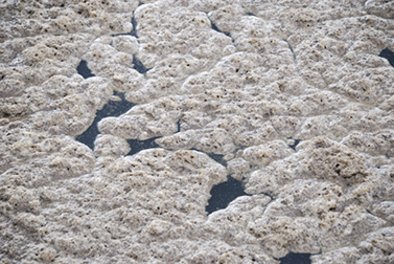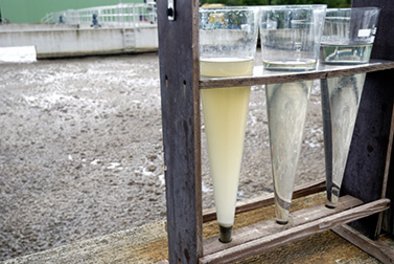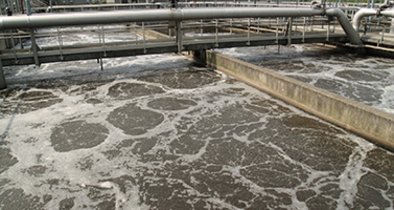Bulking and Floating Sludge
Massive appearance of filamentous bacteria can cause bulking or floating sludge and consequently lead to contamination of the effluent.
Problems with bulking and floating sludge
Bulking and floating sludge impair sludge settling considerably and thus lead to a contamination of the effluent.

Floating sludge

Impaired settling
The cause - filamentous bacteria
Specific factors can cause massive growth in filamentous bacteria. The resulting increase in sludge surface leads to an impairment of sludge settling.

The solution
Using the VIT® gene probe technology, filamentous bacteria can be identified and quantified.

Conventional
With conventional identfication methods, filaments can only be identified with difficulty or cannot be identfied at all.

VIT®
VIT® gene probe technology allows for identfication and quantification of filamentous bacteria.

Process adjustment
By attribution of filament types to process parameters, changes in process management can be applied.
Dick Eikelboom and vermicon
With his work and his development of an identification key for filamentous bacteria, Dick Eikelboom set a milestone in identification and control of filamentous bacteria.
In the late 1990ies and early 2000s Dick worked in close cooperation with vermicon on the development of gene probes for the most significant filamentous bacteria, which represented the next milestone in the detection of filamentous bacteria.
The six-year cooperation in the international research projects "MACOBS" and "DYNAFILM" led to the discovery of novel and important filamentous bacteria and allowed for a reliable first-time detection and monitoring of these bacteria with VIT® gene probes.
Regular monitoring with VIT®
By regular monitoring with VIT®, filaments can be tracked with high specificity. Countermeasures can be taken even before problems like sludge bulking and foaming become evident.
Continuous monitoring can either be performed directly on site with our products or as a service in the shape of our yearly packages, which offer an excellent price-performance ratio.
Most recommended VIT® test kits:
VIT® Chloroflexi
VIT® Haliscomenobacter
VIT® Microthrix
VIT® Nocardia
VIT® Nostocoida limicola II
Lab-services - bulking and floating sludge:
VIT® for Filaments
Filaments PLUS
Chloroflexi rapid analysis
Eikelboom type 021N/Thiothrix analysis
Microthrix analysis